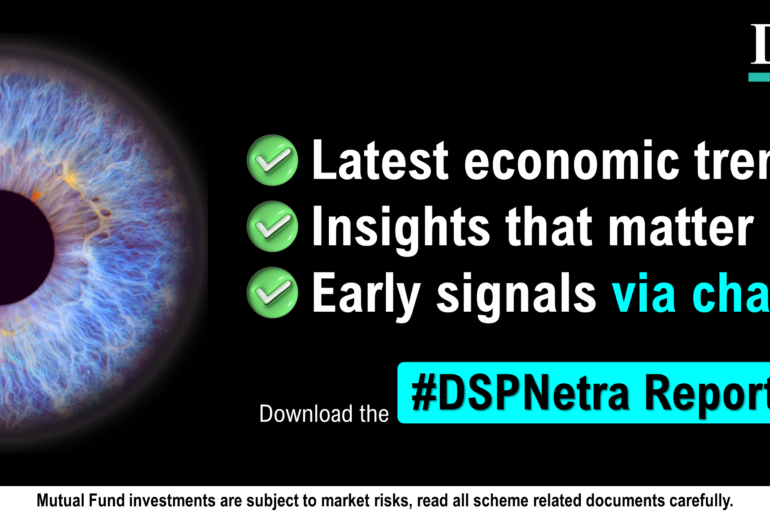Last Updated on Oct 14, 2022 by Gayathri Ravi
Global inflation has had a striking effect on all economies, including India. Hence, to tame inflation, central banks worldwide have been hiking rates. In 2022, the RBI’s Monetary Policy Committee sat for a meeting four times in a row, and the result was an aggregate repo rate hike of 190 basis points or 1.9% to tame inflation.
But the question is, how do repo rates help RBI to solve the problem? How does it affect the stock markets? And most importantly, apart from interest rates, are there any other macroeconomic factors that affect the stock markets? Let’s discuss this today.
Macroeconomic factors that can affect the stock market
1. Interest rates
We all know that the RBI fluctuates interest rates according to the economic condition. It reduces lending rates at times of recession (like it did during the COVID-19 pandemic). So that individuals and companies can take advantage of cheaper lending and pump in growth in the economy.
While the opposite happens at times of inflation. During inflation, lending rates are expensive, so individuals and businesses will have to pay higher interest on their loans. When the cost of borrowing is expensive, people also refrain from taking a loan.
This is something that is happening in the economy currently. RBI has been hiking the repo rates, leading to costlier loans.
Moreover, an increase or decrease in the repo rate dramatically impacts the economy.
During the COVID-19 pandemic, RBI reduced the repo rate to 4%. So, in 2019-20, companies had to pay low interest on their loans which did not significantly impact their profitability. Currently, the repo rate is 5.9%.
So, as investors, we must note that companies with high debt on their balance sheets will have a high-interest expense with rising repo rates which will impact their profits.
A change in interest rate also impacts the inflow and outflow of capital in the stock market. As the repo rates increase, individuals and companies shift their capital from the stock market to fixed-income generating instruments such as bonds as they offer risk-free returns. Whereas, when the interest rates on fixed-income generating instruments are low, people prefer to invest in the stock markets to generate a higher return.
2. Inflation
We all know inflation is a state where the prices of goods and services increase with time. High inflation occurs when the economy grows, there is demand for goods and services, and individuals are willing to spend. When there is a recession, there is an economic slowdown, demand for goods falls, and low credit availability leads to less spending.
High inflation may be positive or negative for the stock market. When inflation is high, cyclical stocks tend to perform better.
What are cyclical stocks?
These stocks are the ones valued based on their underlying commodity prices. So, when inflation is at its peak and the demand is high, the cost of commodities tends to hike; hence, commodity stocks may perform better during high inflation.
High inflation may also have a negative impact on a few companies. It may be bad news for manufacturing companies because, with rising inflation, raw materials prices also increase. Moreover, the manufacturer will have a low-profit margin and may increase the price of the final product. All of this may have a negative impact on the cash flows of the company.
For retail investors, it is crucial to keep track of inflation because we have to change our investment strategies with changing inflation.
As you can see, in 2013, inflation in India was skyrocketing. During this period (2013-2014), the interest rate on fixed deposits was 8.75%-9.25%, and the repo rate was 7.5%.
When inflation is high, RBI opts for a dear money policy and hikes lending rates to such an extent that credit is not easily available to the general public. But, along with expensive loans comes lucrative FD rates and investors prefer to opt for risk-free, favourable return instruments. But, during a recession, the stock market becomes a lucrative alternative to earn inflation-beating returns.
3. GDP
We all have heard of GDP as the economic barometer of the nation. If the GDP is high, it is said to be good for the economy, and if the GDP is low, it is perceived to be bad for the economy.
In the past 20 yrs, India’s GDP growth rate has been positive except for the year 2020. We have seen a massive recovery in the year 2021. This hike in GDP indicates that demand is increasing and more goods are being produced in India.
The stock market indices are also known as the barometer of the economic condition of a country. The stock market is known to factor everything happening in the economy and what would happen next. Hence, investors keep track of the indices and check on what is happening in the economy and worldwide to predict the next market move and capitalise on the opportunity.
GDP and the stock markets have a direct relationship. A positive change in GDP will invigorate the stock markets and vice versa.
For example, in 2006, India’s GDP was around 8% which in 2008 fell to 3%. During the same period, the Nifty 50 rallied from 3,000 to 5,500 levels and fell to 2,800 in 2008.
Similarly, India’s GDP rose from 3.80% in 2002 to 7.66% in 2007. During the same time frame, the Nifty 50 rallied from 2,000 levels in 2002 to 5,600 levels in 2007.
But, you might also see a divergence in GDP vs Nifty 50.
During the COVID-19 pandemic, India’s GDP dipped to -6.60%, but during the same year, we saw the Nifty 50 rallying towards new highs.
So, if there are fluctuations in the GDP, it does not mean the stock markets will also work in synchronisation with it. Multiple factors move the stock markets.
Conclusion
To conclude, macroeconomic factors have a significant impact on the stock markets. Hence, as an investor, you must keep track of it. Apart from this, many other factors affect the stock markets, like the Dollar index, crude oil prices, global indices, and much more. So, keep up with the news and invest wisely for the long term.
This article is written by Vaibhav Agarwal, founder of Teji Mandi and Fund Manager at Motilal Oswal Asset Management Company. He has over a decade of experience in stock picking and generating index-beating returns. Check out Teji Mandi’s smallcases.
- India’s Lithium Leap: A Game-Changer for the EV Space! - Mar 13, 2023
- Macroeconomic Factors That Affect The Stock Market - Oct 14, 2022



